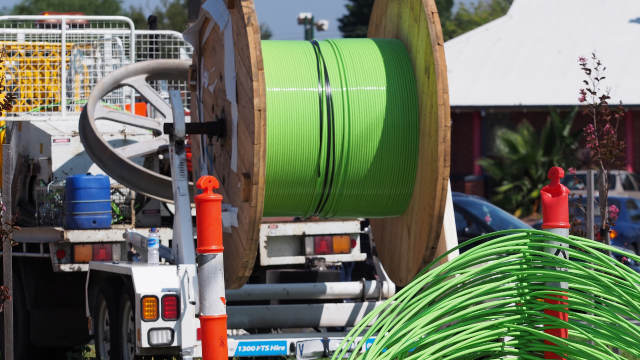NBN Co has delivered its November Special Access Undertaking (SAU), following on from one earlier this year that would have seen increased costs on the network if its proposals went through.
That plan was withdrawn and this time around, things are a bit different. As spotted by iTnews, NBN Co’s November SAU detailed that Australia’s copper network has been experiencing four times as many faults as the fibre network.
NBN Co says that it’s also more difficult to find a fault location on FTTN networks (which use copper) when compared to networks that use fibre, and that the copper infrastructure has become more expensive over time (with the technology aging and requiring more maintenance).
If you’re unaware, the NBN is comprised of fibre and copper infrastructure: most of the copper is grandfathered in from ADSL and telephone line connections, but the fibre was freshly installed from the NBN rollout. Fibre powers FTTP connections entirely, while most other forms of the NBN are powered at least partially via a copper line.
NBN Co is currently in the process of giving the network an upgrade, including replacing copper-serviced addresses with fibre.
“NBN considers its planned increased deployment of fibre to be an efficient investment in its network in line with government policy,” the company wrote.
“Continued transition to digital downloads and increased dependence on home broadband, including for work, education and leisure activities, will continue to drive household demand for higher upload and download speeds, as well as increased bandwidth.”
Leveraging the existing copper technology has been part of the plan since 2013. If you remember correctly, the newly elected government in 2013 wanted to reduce the cost of the NBN by reducing fibre spending.
NBN Co, in this report, says that “investment decisions were never intended to be static”, and that upgrades were always the intention when demand grew.
The company responsible for the rollout of the NBN has also said that demand for high speeds will continue to grow, and that it’s lagging behind competing fixed-line and mobile internet alternatives, based on market trends and average spending since 2017.
“NBN will need to ensure that its services continue to deliver value-for-money, which may require NBN to reduce prices or increase inclusions,” the paper added.
So, what does this report tells us?
Well, it continues to prove that copper is not all that great, especially now that people care more about their fixed-line internet.
It also indicates that the NBN might start to shake things up to compete against mobile and fibre alternatives, such as Opticomm.
